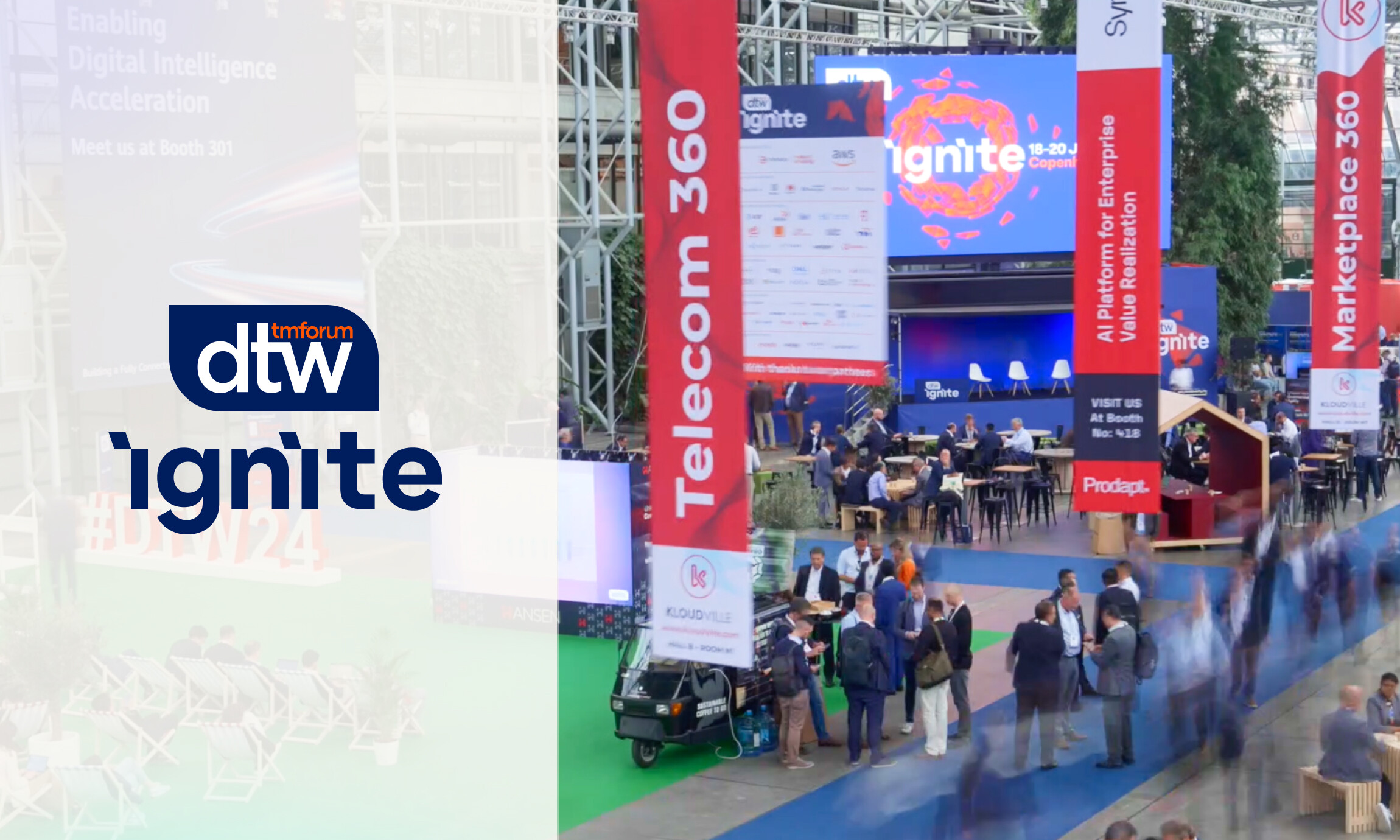
Recognizing that navigating the global telecommunications landscape was getting increasingly complicated, eight telcos joined forces in 1988 and launched the TM Forum as a global industry association for service providers and their suppliers. Today, the organization boasts over 800 members across 110 countries, with a roster that includes the world’s top 10 network and communications providers. In 2021, commercetools joined, becoming the only member providing composable commerce solutions. In June, we attended their annual Digital Transformation World (DTW) Global Summit for the third time. An opportunity for learning, networking and collaboration, DTW24 - Ignite, held last month in Copenhagen, reinforced that communication service providers (CSPs) are committed to discovering solutions that enable them to compete in a rapidly evolving digital environment.

Here, Greg Kieran, Director of Solutions Engineering at commercetools shares his key takeaways from the event.
1. DTW is growing both in size and importance
It’s become a huge event — a strong sign that the TM Forum has established itself as the industry body for telcos. The organizers shared that attendance has grown exponentially since relaunching in 2022 after COVID-19. Almost 4,000 industry professionals from all over the world — Asia, Australia, America, etc. attended this year’s event — and it wasn’t vendor-heavy either; a significant number were executives from telco companies. All of the major players were there, including almost all of our 14 telco customers.
2. Open digital architecture (ODA) is the framework for the future
While in the retail sector, everyone is turning to composable commerce and MACH® architecture to deliver the modern digital experiences customers expect today, the telco industry has adopted its own framework, known as ODA. Introduced by the TM Forum in 2018 to support telcos in shifting from monolithic, legacy IT stacks toward more agile, horizontal, plug-and-play environments, the conversation at DTW24 - Ignite confirmed that ODA is now widely accepted as the strategy propelling the industry forward. In his keynote, Nik Willetts, CEO of TM Forum, acknowledged that the vision of ODA is to enable “truly composable IT and ecosystems that will allow our people to create and innovate at a pace we haven’t seen before.”
The concepts of ODA — modularity, flexibility and interoperability — and its benefits of customization, speed of innovation and incremental improvement fully align with the tenets of composable commerce. The two approaches are basically the same, they just go by different names.
3. AI innovation is a top priority
Exploring ways to leverage AI to create efficiencies was a big topic of conversation. While it is still in the exploratory phase, there were some really interesting use cases presented during the keynotes. Hesham Fahmy, CIO of Telus, shared that the company has launched multiple co-pilots, essentially small GenAI tools, for different parts of the business. One is specifically for field engineers to help troubleshoot and fix equipment on-site, which is especially helpful when they discover old, outdated equipment. The engineers can describe what they see, ask how to fix it and AI delivers directions — and, he said it's driving a 75% improvement in speed and efficiency.
4. Collaboration is driving innovation
While telecommunications is one of the oldest industries and many CSPs are still sitting on antiquated platforms and are grappling with the challenges of expanding their portfolios beyond connectivity, it was clear that industry leaders are fully invested in working together to solve problems and create new opportunities. The Innovation Hub in the middle of the show was an incredible example. Executives from different companies formed groups to work together to solve one specific problem. For example: How can we solve network connectivity for people living in remote areas worldwide? They were collaborating on ideas like low-orbit satellites, which has gained huge interest since Elon Musk launched Starlink.
Part of the TM Forum’s Innovation Engine and the Catalyst program, these hubs are bringing together expertise and resources to discover practical, innovative solutions that can solve some of the challenges telcos face and deliver immediate business impact.
5. Diversification is an imperative
here’s a pronounced awareness that the traditional telco business model isn’t sustainable in today’s world that’s driving telcos to expand their portfolios beyond connectivity. At DTW24 - Ignite, Telus executives shared their plan to broaden their healthcare and OTT offerings and shared that they’ve launched eight new subscription services since the beginning of the year. EE, the consumer division of BT, provided insights into why the company decided to focus on building a gaming business, offering products and services both online and in physical stores to capitalize on the huge growth of the consumer gaming market.
To learn more about how telcos are evolving their technology and business strategies to retain relevance and a competitive edge, read How telecom carriers can rewire customer loyalty and growth with composable commerce.